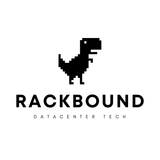Inside Isomorphic Labs Cloud-Native HPC Architecture for AI Drug Discovery

Isomorphic Labs emerged as a distinctly digital creation, a direct outgrowth of Google's DeepMind and its computational biology ambitions. It's a biotech company, yes, but an unusual one.
Unlike traditional pharma or biotech entities, Isomorphic Labs started life in silicon.
It was engineered from the outset to operate entirely within a computational context, relying exclusively on cloud resources for the creation, simulation, and validation of new molecular entities.
As Isomorphic nears human trials of AI-generated oncology drugs (a notable achievement in itself) the real marvel may lie deeper, in the sophisticated IT and cloud infrastructure underpinning the entire discovery pipeline.
At the core of Isomorphic's technical strategy is Google Cloud. Though hardly a surprising choice given their corporate lineage, this speaks to the ambitious nature of their computational goals. Thousands of GPUs provide the compute, driving massive AI model training and inference workloads, enabling rapid exploration of the immense chemical and biological spaces required for viable drug candidates.
But scale alone isn’t the whole story.
The cornerstone of Isomorphic Labs' computational platform is AlphaFold 3, the most advanced iteration of DeepMind’s widely known protein-structure prediction model.
While previous AlphaFold versions tackled individual protein folding problems, AlphaFold 3 advances beyond these capabilities, applying sophisticated diffusion-based neural networks capable of modeling not just single proteins but their interactions with ligands, antibodies, RNA, and DNA. This expands AlphaFold's applicability from a protein-focused academic tool into an integrated computational engine suitable for full-fledged drug design at scale.
Deploying AlphaFold 3 at this ambitious scale required Isomorphic to architect a specialized infrastructure stack. Publicly available details reveal their adoption of Google's Cluster Toolkit, a high-performance computing management framework designed explicitly for scientific workloads. This toolkit enables them to orchestrate complex workloads at extreme scales.
Molecular modeling workloads are particularly demanding due to their need for frequent data exchanges between accelerators and high-throughput storage systems. Isomorphic Labs resolves these data-motion bottlenecks using Google's managed parallel file systems, notably Lustre, allowing swift data transfers during simultaneous molecular simulations involving thousands of parallel computations.
The architecture’s ability to integrate large-scale compute resources with high-speed data infrastructure means that AlphaFold 3 can generate and evaluate tens of thousands of potential drug candidates simultaneously.
Computational chemistry traditionally wrestles with complex trade-offs between model accuracy and simulation scale, but Isomorphic's infrastructure allows them to run these compute-intensive workloads in parallel, sidestepping traditional trade-offs.
In other words, they can rapidly iterate through chemical structures, virtually screening molecular candidates against biological targets to identify high-affinity ligands, something that previously took months or years in traditional labs but now happens within hours or days.
Beyond protein modeling, Isomorphic uses additional proprietary generative and predictive machine-learning models that systematically evaluate pharmacokinetics, toxicity, absorption, and distribution profiles. These models are continuously trained and refined using extensive public and proprietary datasets sourced through partnerships with pharmaceutical companies like Novartis and Eli Lilly. Managing and analyzing these extensive datasets on Google Cloud demands a robust data infrastructure, comprising both object and file storage services, tightly integrated via Google Cloud's automated pipelines, containerized workloads, and standardized data management practices.
Critically, the cloud-first strategy at Isomorphic Labs reshapes drug discovery itself.
Traditional pharmaceutical companies start in wet labs, moving gradually toward computational augmentation. Isomorphic Labs turns this process inside out.
The digital nature of their platform means they begin entirely within a computational environment, selecting only the most promising molecular candidates for validation in physical laboratories.
The platform’s deep integration with Google Cloud also provides an elasticity rarely seen in biopharma infrastructure. Compute resources scale dynamically with demand, meaning they can rapidly provision GPU clusters and storage capacity as needed.
This elasticity enables them to adapt quickly to new scientific insights, integrating fresh datasets or pivoting their modeling efforts to address emerging biological targets or disease pathways without infrastructural delays or traditional capacity-planning constraints.
The full extent of this orchestration is particularly evident as Isomorphic moves toward human trials.
Traditionally, moving from computational modeling to clinical testing requires a slow and painstaking validation process, involving multiple rounds of incremental laboratory experimentation. Their infrastructure facilitates accelerated validation cycles, allowing rapid virtual screening of compounds, immediate feedback loops, and swift progression toward clinically relevant candidates.
It’s this accelerated computational-to-clinical transition that genuinely distinguishes Isomorphic from competitors and represents perhaps the most profound shift in the entire drug-discovery model.
Isomorphic Labs' public disclosures paint a detailed and compelling picture of their computational backbone. Their cloud-native infrastructure, built upon Google's managed high-performance clusters, parallel file systems, and AlphaFold 3-driven model architectures is rethinking how drugs are discovered, shifting biology into a fundamentally computational domain, and redefining the drug-discovery landscape along the way.




